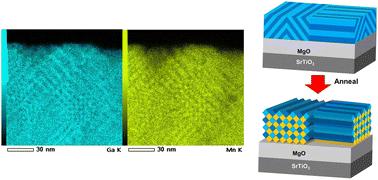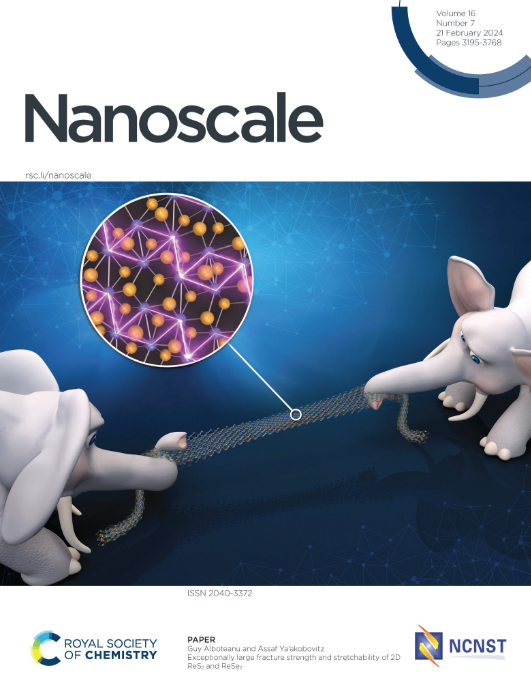Asymmetric self-organization from a symmetric film by phase separation
IF 5.8
3区 材料科学
Q1 CHEMISTRY, MULTIDISCIPLINARY
引用次数: 0
Abstract
Self-organization realizes various nanostructures to control material properties such as superconducting vortex pinning and thermal conductivity. However, the self-organization of nucleation and growth is constrained by the growth geometric symmetry. To realize highly controlled three-dimensional nanostructures by self-organization, nanostructure formation that breaks the growth geometric symmetry thermodynamically and kinetically, such as tilted or in-plane aligned nanostructures, is a challenging issue. A vertically aligned nano-checkerboard is typically formed from ZnMnGaO4 with the twin domain vertically aligned by the stress from the MgO substrate. The change in the template structure is promising to form a different type of nanostructure. The cubic ZnMnGaO4/MgO films were annealed to form nanoscale tetragonal domains in the tilted direction from the surface, which is determined by lattice mismatch, lattice symmetry, and atomic bonding. On the other hand, as a result of free deformation, in-plane aligned twin domains were formed on the SrTiO3 substrate with a thin MgO buffer layer, which does not induce stress in the ZnMnGaO4 film. By annealing the ZnMnGaO4/MgO/SrTiO3 film, the nano-checkerboard with a size of ∼10 nm and a length of ∼200 nm is elongated to the in-plane [100] or [001] direction. This study demonstrates the possibility of fabricating a nanostructure that breaks the growth geometric symmetry, which is not achieved by the previous self-organization. The phase separation with controlled template opens more complicated three-dimensional structures by self-organization.

求助全文
约1分钟内获得全文
求助全文
来源期刊

Nanoscale
CHEMISTRY, MULTIDISCIPLINARY-NANOSCIENCE & NANOTECHNOLOGY
CiteScore
12.10
自引率
3.00%
发文量
1628
审稿时长
1.6 months
期刊介绍:
Nanoscale is a high-impact international journal, publishing high-quality research across nanoscience and nanotechnology. Nanoscale publishes a full mix of research articles on experimental and theoretical work, including reviews, communications, and full papers.Highly interdisciplinary, this journal appeals to scientists, researchers and professionals interested in nanoscience and nanotechnology, quantum materials and quantum technology, including the areas of physics, chemistry, biology, medicine, materials, energy/environment, information technology, detection science, healthcare and drug discovery, and electronics.
 求助内容:
求助内容: 应助结果提醒方式:
应助结果提醒方式:


